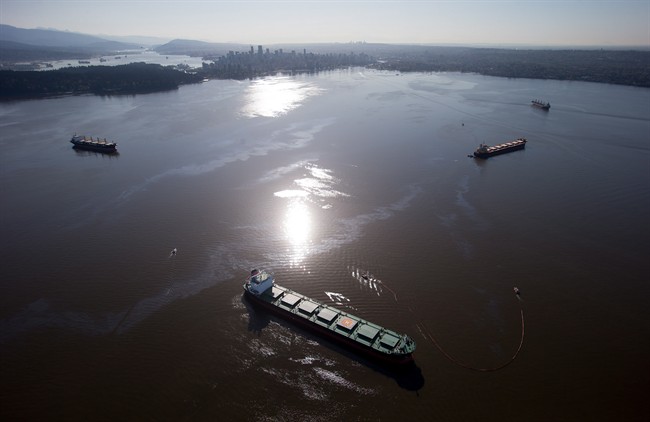VANCOUVER – Vancouver’s economy could suffer a $1.2-billion blow in the case of a major oil spill caused by Kinder Morgan’s Trans Mountain pipeline expansion, concludes a new report released by the city.

The report, conducted by the University of B.C.’s Fisheries Economics Research Unit, examined the potential economic costs of a 16-million litre spill in Burrard Inlet, the body of water bordering to the city that is busy with industrial use, cruise ships and float planes.
Researchers looked at the performance of five ocean-dependent activities closely linked to the marine environment, including commercial fishing, port activities, inner harbour transportation, tourism and recreation.
The report found these activities directly employ four per cent of the city’s population and contribute more than $3 billion in gross domestic product to Vancouver’s economy every year. A spill could cost these industries hundreds of millions of dollars, it said.
“The risk is massive. Those numbers are quite substantial,” said city councillor Andrea Reimer.
“And that’s just if an oil spill occurs. The idea of being a major oil port has economic impact as well. Our economy … is very dependent on the image of Vancouver as a liberal city, a green city.”

Get breaking National news
The City of Vancouver is publishing a series of reports critical of the Trans Mountain pipeline expansion leading up to its submission of evidence next week to the National Energy Board, which is reviewing the project. A decision on the project is expected in January 2016.
Kinder Morgan hopes to triple its bitumen-carrying capacity to 890,000 barrels a day by laying almost 1,000 kilometres of new pipe near the existing pipeline that runs from Alberta to Burnaby, B.C.
READ MORE: Vancouver-area mayors grill National Energy Board
The $5.4 billion expansion would increase the number of oil tankers in Burrard Inlet to 34 per month from five, according to the city.
Trans Mountain spokeswoman Ali Hounsell said petroleum has been safely shipped through Burrard Inlet for six decades and safe marine transportation is an important part of the project’s development.
She said the company has conducted and filed detailed spill response and modelling studies including citing a credible worst case spill scenario which is under review by the NEB.
Hounsell added it’s important to remember that the scenario painted in the city’s report would be covered by Canada’s Marine Liability Act, which ensures approximately $1.3 billion is available to cover liability.
“Reports such as the one released today are expected and will be reviewing it as we prepare our responses to submit to the NEB,” she said in a statement.
The report, commissioned by the city and published Friday, analyzed two spill scenarios in Burrard Inlet in May and in October. It found the economy could suffer more than double the economic losses in spring during peak tourist season.
A spill in May could cause total losses ranging from $380 million to $1.23 billion, without counting the cost of recovery and cleanup, it concluded.
The city also released a separate modelling animation showing the movement of oil following a hypothetical 16-million litre spill near the Second Narrows Bridge on the city’s east side.
Time-lapse animation showed multiple black specks, each representing 2,000 litres of oil, spreading toward West Vancouver before flowing back toward Coal Harbour and clinging to the shoreline around Burrard Inlet.







Comments